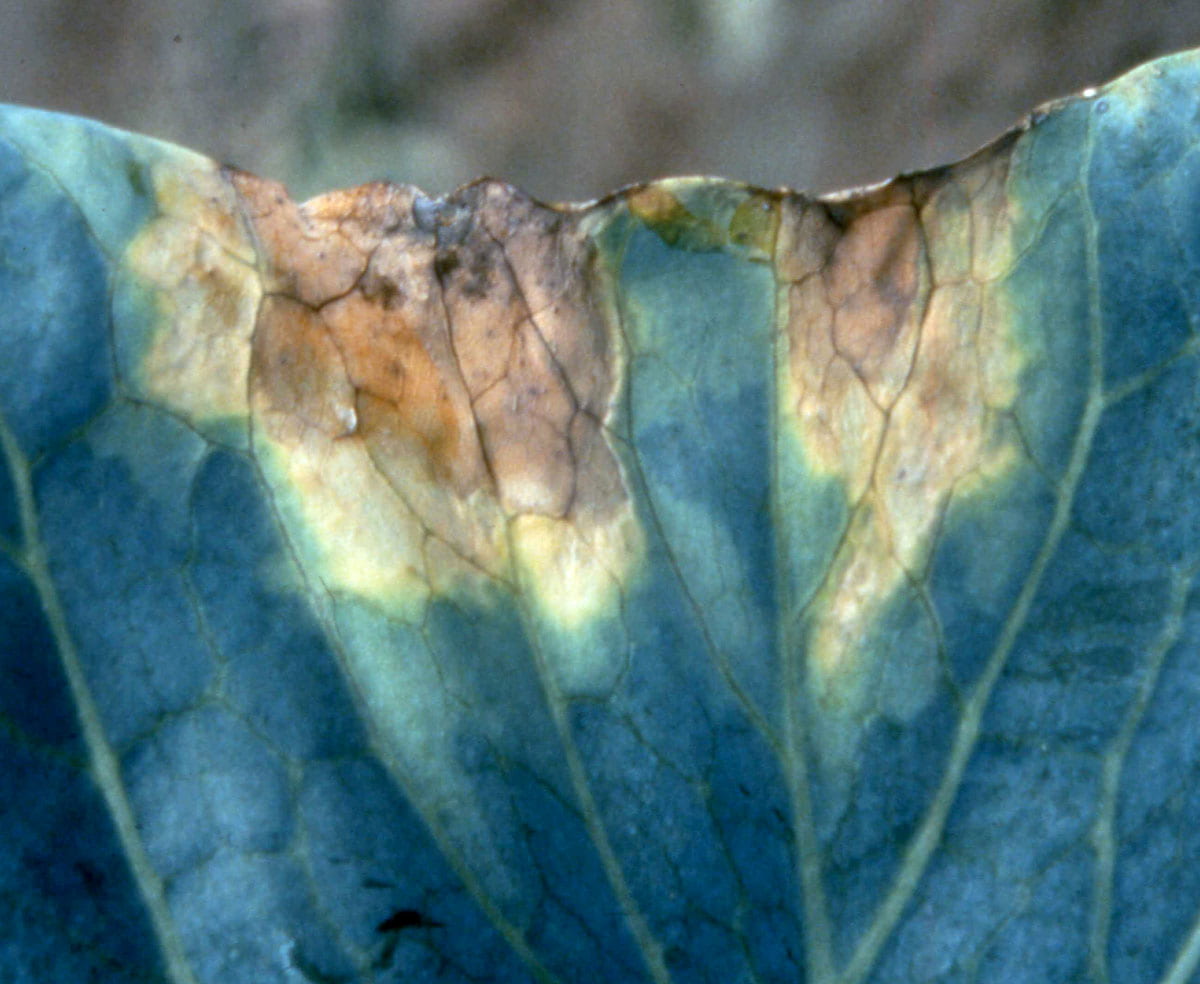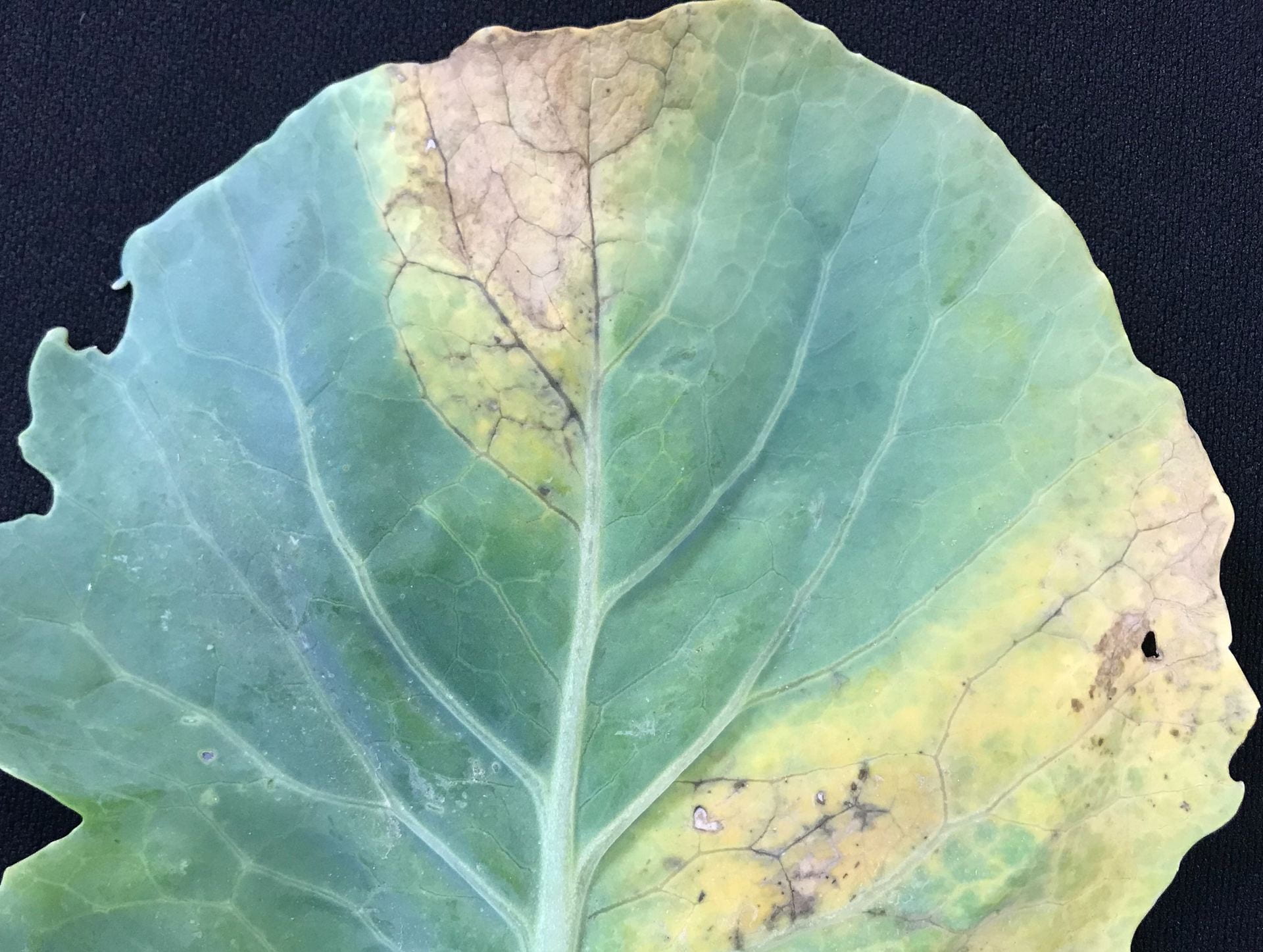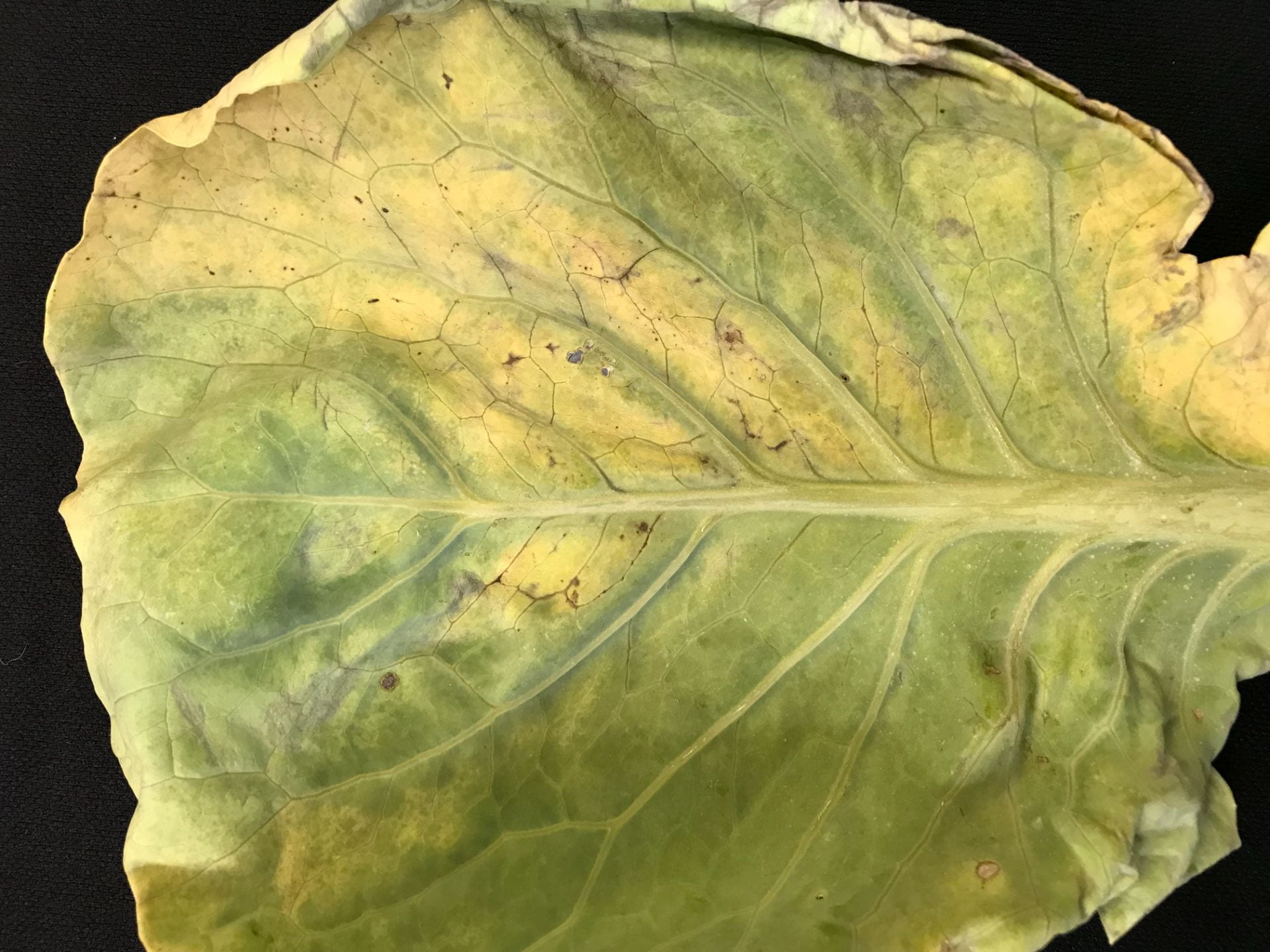This bacterial disease is common on Long Island and can be found most years, but occurs sporadically because sources of this pathogen are limited. Potential initial sources for a farm are contaminated seed, infected seedlings grown elsewhere, and water or insects moving the bacteria from affected crop at a nearby farm. Commercial cruciferous seed is routinely tested and treated for the black rot pathogen. A rainstorm with wind or surface water runoff could move bacteria from a neighboring farm. This bacterium can survive between crops in infested plant debris and infected cruciferous weeds. Thus, each year black rot typically is found on farms where it occurred before. On Long Island, black rot is most common in fall, especially when rain is frequent. Temperature above 77 F is optimum for symptom development. Soft rot bacteria invading leaf tissue killed by black rot can lead to extensive losses. Black rot bacteria can multiply in plants without causing symptoms when temperature is low.
The characteristic symptom of black rot is V-shaped lesion extending inwards from the leaf edge. Initially it is dull yellow (first image below), then the center turns brown and becomes desiccated (second image below). It is the result of infection through hydathodes (pores where veins end at the leaf edge). Sometimes affected leaf tissue is associated with insect feeding or other wounds which provide a means for bacteria to enter the leaf (third image below). Symptoms appear about 10-14 days after infection; longer under suboptimal temperatures. As the disease progresses, most of the leaf blade can become affected (fourth image below). This also occurs when infection is systemic which can occur when bacteria were in the seed or infected roots (fifth image below). Diagnostic for black rot is black veins. These can be seen in the lesions (second image below) and when the leaf is cut through the lesion (sixth image below), and also inside the petiole when bacteria have moved systemically (seventh image below). Bacteria can be seen streaming out of infected veins by examining under a compound microscope the edge of leaf pieces cut from lesions (eight and ninth images below).

Management practices for black rot include selecting seed that has been tested and treated for the pathogen. Select resistant varieties when possible. Treating seed with hot water can be effective for bacteria on and also inside seed when the seed lot is not heavily contaminated. It is best to have seed treated commercially when possible. Plant where cruciferous crops have not been grown for at least three years during which time cruciferous weeds were controlled. Inspect plants at least once a week for symptoms. Apply fungicides (see next paragraph) using a boom sprayer when foliage is dry. An airblast sprayer can disperse bacteria that are in any water that is present. Bacterial diseases are managed best starting applications before symptoms are seen. Do not work in fields when plants are wet as bacteria in water can be moved on workers and equipment. Work in crops with no symptoms before affected crops. Clean equipment after use in an affected crop. Overhead irrigate when plants are dry; when dew is present is the worst time as bacteria can be in guttation water that exudes out of hydathodes along leaf margins. Immediately after harvest, destroy crop debris such as by flail chopping and then incorporate.
Copper fungicides are most commonly used for black rot. There are several products including organic formulations. They differ in type of copper and in amount of metallic and biologically active copper. Applying a mancozeb fungicide with copper (or using ManKocide) can increase copper activity. Bacterial pathogens, including the one causing black rot, can develop resistance to copper. Actigard, a plant activator, is also labeled for managing black rot. Regalia acts similarly by boosting the plant’s defense mechanisms. It is a biopesticide and approved for organic production. These need to be applied starting before infection to obtain the most benefit. They are recommended used in a program with fungicides that act directly on the pathogen. There are several other biopesticides labeled for black rot. Bacterial pathogens can be difficult to manage with fungicides partly because of their ability to multiply quickly. Therefore a preventive application schedule is considered best with all fungicides, and they should be used as part of an integrated management program.
History of black rot at Cornell and LIHREC: Black rot was a very important disease in the 1930s on Long Island when crucifers were being grown widely, and thus this disease was a focus of research conducted by Howe S. Cunningham who was stationed at the Cornell University facility in Riverhead (then called the Long Island Vegetable Research Farm) from 1931 to 1952. His research included searching for a source of resistance and developing a hot water seed treatment to kill the pathogen in seed. See the eCommons article about H. S. Cunningham to learn more about him and his career.
Please Note: The specific directions on pesticide labels must be adhered to — they supersede these recommendations, if there is a conflict. Any reference to commercial products, trade or brand names is forinformation only; no endorsement is intended.
The black veins in the first image below are due to black rot (bacterial streaming seen) whereas no streaming was observed from the black veins in the second image that came from a plant affected by white mold, documenting that sometimes veins can be black due to another cause.















